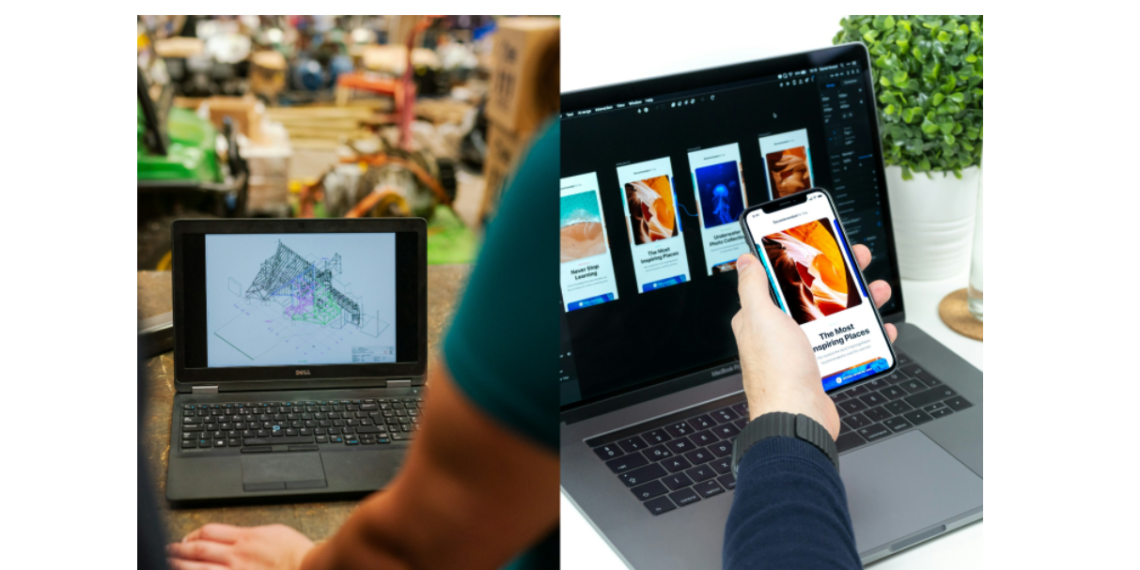[Continue Reading from Part 1 here]
As someone who transitioned from mechanical engineering to UX design, here are five steps I personally took that helped me:
1. Desire and Acquire Foundational Knowledge
To bridge the gap between my engineering background and UX design, I immersed myself in learning. I started with the elementary parts of UX design by taking a foundational course on the subject, on careerfoundry.com.
During my time at the university, I learnt how to design graphically, and how to work with design software. My experience with CAD software translated well to UX tools like Sketch and Figma. I wasn’t too bothered about the UI(user interface) side of design because I had some knowledge in design, and I needed to learn more about the field of UX.
Reading books like “Design of Everyday Things” by Don Norman helped to deepen my understanding of UX principles and sparked my design thinking.
To effectively move to design, you must understand what it entails and what makes a good design and designer.
2. Learn and Get Relevant Skills
After getting solid foundational knowledge, I started learning actively (and passively). I still needed to get up to speed on my preferred UX tool “Figma” and the latest design trends. I enrolled in Google UX design course on Coursera, which offered structured learning paths and practical exercises.
Learning actively involves subscribing to design courses with a clear learning path while constantly practicing.
Reading through a lot of blog posts on medium.com, and watching a lot of tutorial videos all played a massive role in helping me get a good grasp of the subject. I kept working on concept projects.
Learning passively may include observing various designs in different contexts without engaging in analysis. It can also include keeping up with the latest trends or even relating little things in your surroundings to design when conversing.
3. Create Good Relationships with Fellow Designers
Good relationships with fellow designers foster mentorship, learning opportunities, and a supportive professional network provided by CVspan. I collaborated on projects and gained hands-on experience while engaging with peers. This provided industry insights and career opportunities for me.
4. Create a Solid Portfolio
Next, I created a good portfolio. Like many professions, a portfolio is crucial as it showcases skills and experience to potential employers and partners.
I documented each project in detailed case studies, highlighting my research process, design decisions, and iterations.
I uploaded as many relevant case studies as possible to my portfolio during my transition and implore you to do the same. There are several platforms you can use for your UX design portfolio.
We have Behance, Adobe Portfolio, Dribble, and many others. Collaborating with other aspiring designers on open-source projects provided valuable experience and diversified my portfolio.
5. Start and Keep Applying for Jobs
I started applying to UX design roles as soon as I had a solid portfolio. I applied to as many jobs as possible, even though some seemed out of my reach. Volunteering for non-profits helped me contribute to meaningful projects while further developing my portfolio. You should not short-change yourself, you never know what employer might be impressed with your background. Bear in mind landing your first role is the hardest. So, as much as you work on your portfolio, put a lot into your cover letters and initial interviews.
Transitioning to a new field came with its own set of challenges, my transition from mechanical engineering to UX design has been incredibly rewarding.
For anyone considering this transition, my advice is to embrace the similarities between the fields, continuously seek knowledge, and never underestimate the value of your existing skills.
With dedication and perseverance, the shift from mechanical engineering to UX design can lead to a fulfilling and dynamic career where your problem-solving abilities and technical expertise will be highly valued.
With some time and the steps above, you too will land your first UX design role. Don’t give up. Cheers.
[End]








Comments 1